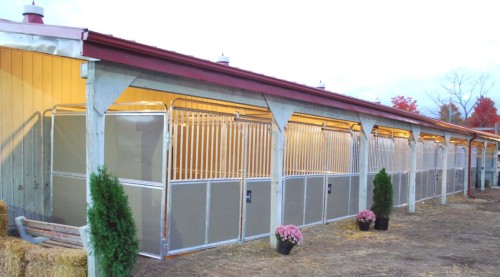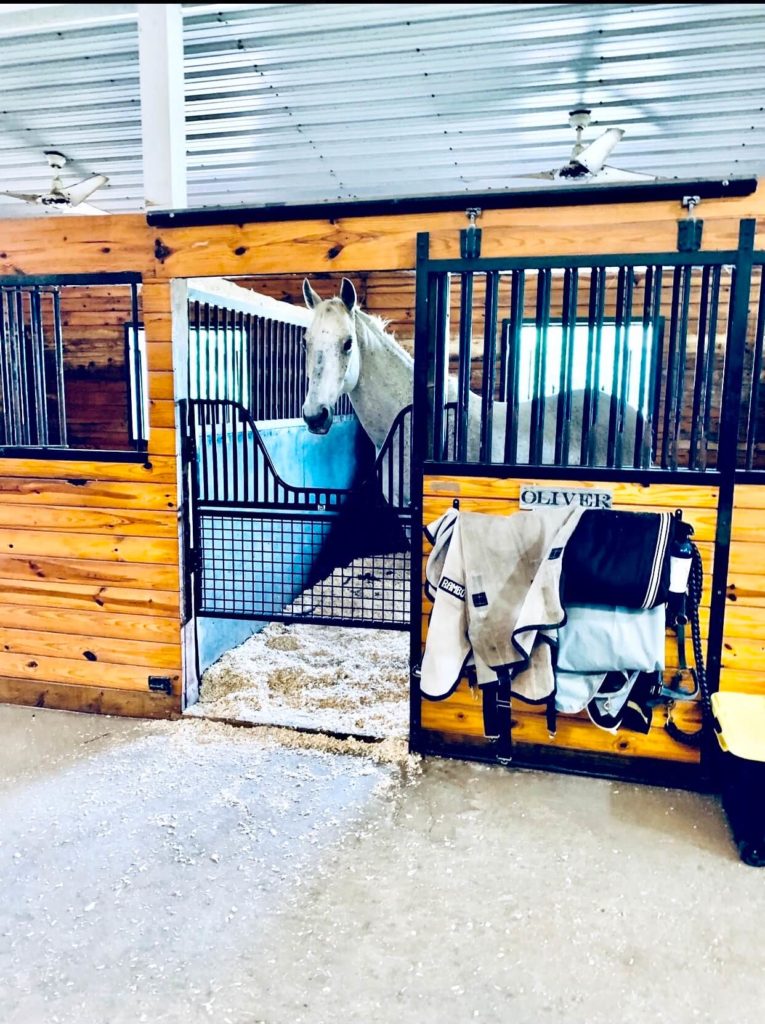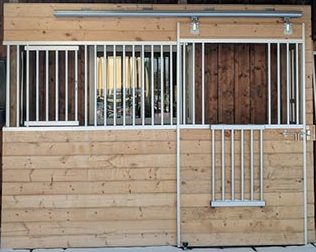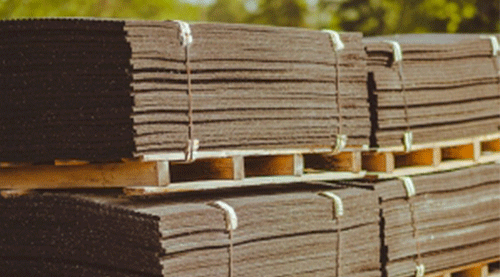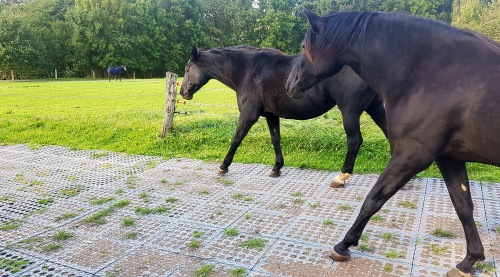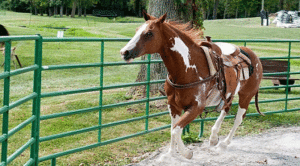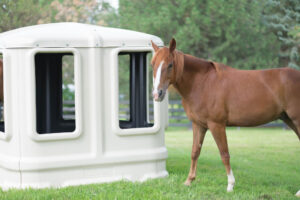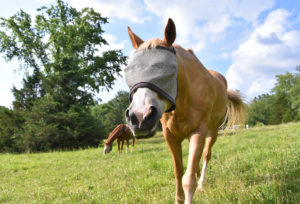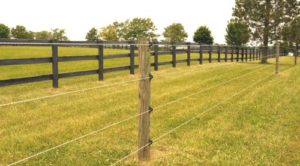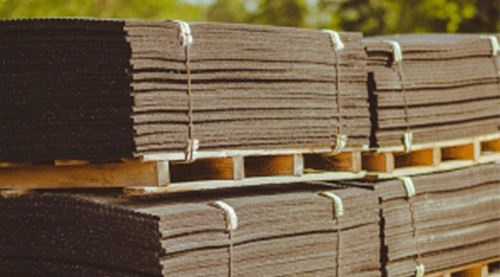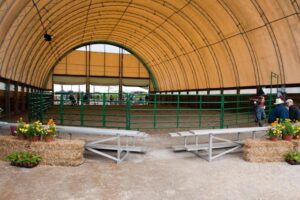
Choosing Horse Stalls for your Barn
by Lisa Kiley – published in the Horsemens Corral September 2020
When choosing horse stalls for your barn, the options can seem endless and get a bit confusing. While some decisions are up to personal taste or the structure of an existing building, others come down to the safety and health of the horses that will occupy them. Here are some tips that will help you get the best stalls for your barn project.
How Big Should Horse Stalls Be?
The size of your stalls should be determined by a few factors. The most important consideration is the safety of the horses that will be housed in the stalls. A 12 x 12 stall is the standard recommended size for horses that weigh in around 1000lbs. but 10 x 12 stalls can also work for horses of this size. Smaller horses, ponies, and miniature horses do well in stalls that are 10 x 10. Larger breeds may require 14 x 14 stalls or larger. Generally, the horse should be able to comfortably lay down without touching a wall. If the stall will be used for foaling, a double sized stall based on the size of the horse should be used. Don’t forget, additional size does require additional bedding and maintenance.
For more insight on bedding options, be sure to read Best Bedding For Horse Stalls
Modular vs. Built-In
Once you have decided on size, consider how you will build the stalls. There are several options for both modular and built-in. Some modular stalls can function as permanent stalls with the option to move them as needed. This allows you to change the floor plan or if you ever move, you can take them with you. The other advantage is that they are free standing, so they do not require posts that are anchored into the ground. Traditional built in stalls lend themselves to work within the shape and style of the barn. While they do require anchor posts to secure the stall material into place, they can often be more economical and customizable. If the barn already has the base structure for stalls, it is easy to update them to make them safer or more functional.
Wall & Bar Styles
How much communication do you want to allow between stall mates? If the goal is allowing the horses to see each other, bars between the stalls works well. The safest ones are no wider than 4 inches and should always be set vertically. Horizontal bars can be dangerous because a horses leg could get caught. Utilizing bars between the stalls will allow ventilation in the barn. If limited communication is desired, a solid wall will help limit visibility between horses. Make sure your horse stalls are tall enough so a horse cannot rear up over the top of the stall wall. The ideal height is 8ft for safe enclosures, but the stall wall should be no less than 7 feet.
Horse Stall Doors
When it comes to doors, sliding and swinging are the two main options. Sliding doors are often preferred because when left open, they don’t clutter the aisleway. When properly mounted with stops and stays, horses are less likely to get caught up on them. Swinging doors can be tied back when open to keep them out of the way and prevent injury. Special consideration should be given to ensure door latches are secured and cannot be readily opened by a curious horse. Additionally, latches and hardware should have smooth edges and easily tuck away to limit the risk of injury.
Materials
Stall bars and grills: When it comes to the stall bars for the fronts and sides, aluminum is one of the best materials. Even though it is lighter than steel, it is comparable in strength. One of the best features is that it has a low potential for rust compared to steel. This will keep it looking new for years compared to other bar options. Steel is also a very strong choice and when the bars have been powder coated, that helps prevent rust. However, rust will be inevitable, and will eventually require maintenance or replacement to keep them in safe working order.
Stall siding: When it comes to wood, the general rule is to use the hardest wood that you can afford for the project. Softer woods such as pine can be good choices if the board is a tongue and groove which will add strength and be much more economical. Puck board (HPDE) is also becoming more popular because of its strength and resistance to moisture and odor. It’s also easy to clean and disinfect. Although puck board is most often seen in portable type stalls, it can also be part of a permanent stall set up.
Add on Options
Beyond the safety and comfort of the horse, there are also opportunities to create stalls that are quite functional. Adding items like swing out feed doors or grain scoop openings can make daily chores less of a hassle. It is important that horses still get looked in on a couple times a day to make sure that they are in good health. Drop down socializing doors or stall gates with yokes allow a horse to hang their head out and socialize with neighbors. Adding windows or Dutch Doors to the exterior and LED lighting in the stalls will create a bright and inviting space for both you and your horse.
Check out Lighting The Way for LED lighting tips



